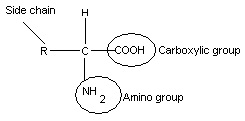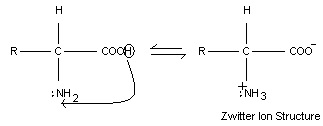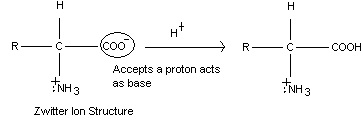α-Amino acids are the building blocks of proteins. Amino acids are organic compounds containing both an amino group and carboxylic group. They are represented by a general formula:

The amino (—NH2) group may be attached to any carbon atom other than that of carboxylic (—COOH) group. They are referred to as α, β, γ depending upon whether the amino group is present on α, β or γ carbon atom relative to carboxylic (—COOH) group. Almost all naturally occurring amino acids are α-amino acids, i.e. containing amino group on the α-carbon atom to carboxylic acid.
Classification of α-Amino acids: Amino acids can be broadly classified as acidic, basic, or neutral depending upon the relative number of amino and carboxylic group in their molecules.
Acidic amino acids contain more number of carboxyl groups than amino groups. For example, aspartic acid, asparagines acid, glutamic acid which contain two (—COOH) and one amino (—NH2) group are acidic amino acids.
Basic amino acids contain more number of amino groups than carboxyl groups. For example, lysine, arginine and histidine, which contain two amino (—NH2) and one (—COOH) group are basic amino acids.
Neutral amino acids contain equal number of amino and carboxylic groups. For example, amino acids such as glycine, alanine, valine, etc. are neutral amino acids.
Properties Of Amino Acids: Amino acids are usually colourless, crystalline solids. These are soluble in water and have high melting points. Therefore, they behave like salts rather than simple amine or carboxylic acids. This behaviour is due to the presence of both acidic and amino group in the same molecule. Thus, amino acids exist as dipolar ion called Zwitter ion.

- When an acid is added to amino acids, —COO– accepts the proton and gets converted carboxylic substituent (—COOH). Thus, the basic character is due to —COO– group.

- When an alkali is added to amino acids, —NH3+ group release the proton and changes to amino group (NH2). Thus, the acidic character is due to — NH3+group.
